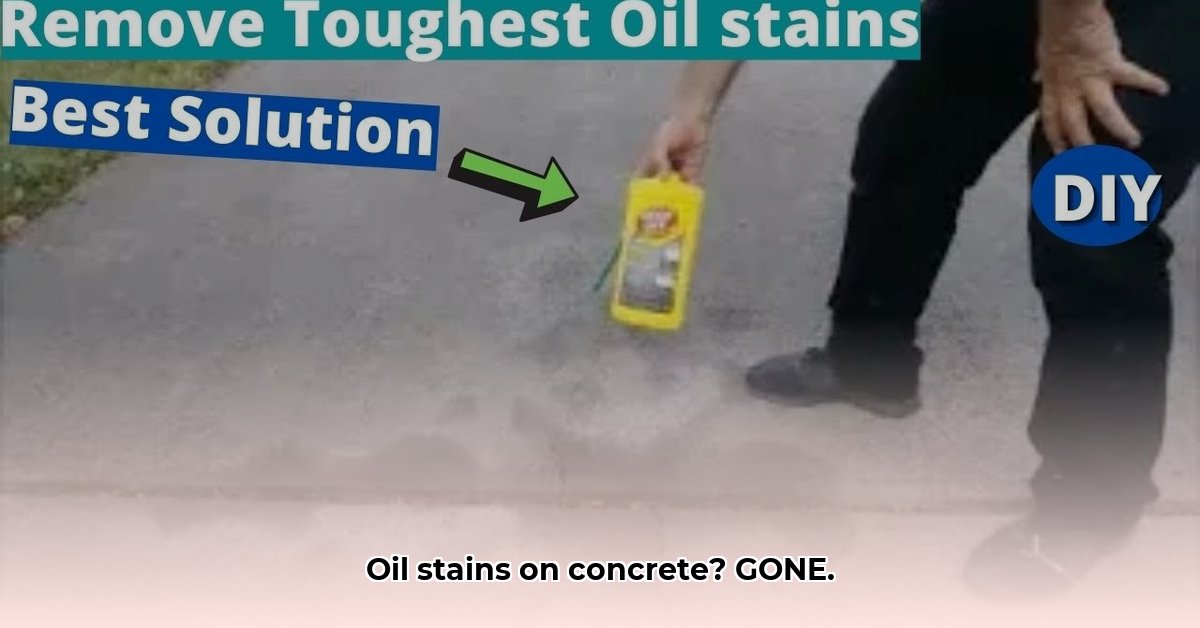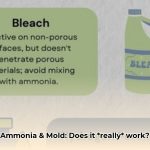Oil stains on your concrete driveway or garage floor are an eyesore and can be a safety hazard. This comprehensive guide provides step-by-step instructions for removing oil stains, from fresh spills to stubborn, set-in messes. We’ll cover everything from simple DIY solutions to professional-grade techniques, helping you restore your concrete’s pristine appearance.
Fast Action for Fresh Spills
A fresh oil spill is the easiest to clean, so swift action is crucial. The longer you wait, the deeper the oil penetrates the porous concrete surface.
-
Contain the Spill: Blot (don’t rub!) the excess oil with absorbent materials like paper towels, rags, sawdust, or cat litter. Rubbing spreads the oil and makes the stain worse.
-
Absorb the Residue: Cover the area with a thick layer of absorbent material like cat litter, baking soda, cornstarch, or diatomaceous earth. Let it sit for 24-48 hours to draw out the remaining oil. Repeat if necessary.
Tackling Set-In Stains
Older, set-in stains require more effort, but several effective DIY methods can tackle the job.
DIY Cleaning Solutions
-
Detergent Power: Make a paste of powdered laundry detergent and water. Apply it to the stain, let it sit for 30-60 minutes, scrub vigorously, and rinse. Dish soap can work for light stains, but laundry detergent is generally more effective.
-
Baking Soda Paste: A paste of baking soda and water can act as a gentle abrasive. Apply it to the stain, let it sit for 30 minutes, scrub, and rinse.
-
Vinegar Solution: White vinegar’s acidity can help cut through oil. Pour it directly onto the stain, let it sit for 30 minutes, scrub, and rinse. Always test vinegar in an inconspicuous area first, as it may affect some concrete finishes.
-
Borax Paste: Mix borax with hot water to create a paste. Apply it to the stain, let it sit for 30-60 minutes, scrub, and rinse.
The Poultice Method
For stubborn stains, the poultice method offers a deep-cleaning solution.
-
Prepare the Poultice: Mix an absorbent material (cat litter, sawdust, powdered clay) with a solvent (paint thinner, mineral spirits) or a gentler alternative (water, mild detergent). Use caution with solvents and ensure proper ventilation.
-
Apply and Cover: Apply a thick layer of poultice to the stain and cover it with plastic wrap to prevent drying.
-
Wait and Remove: Let the poultice sit for 24-48 hours (or longer for very stubborn stains). Carefully remove the dried poultice and dispose of it responsibly.
Professional Cleaning Techniques & Products
For the toughest stains or large areas, professional methods or commercial products may be necessary.
-
Commercial Degreasers: Follow product instructions carefully, as these can be potent.
-
Oil-Eating Microorganisms: Specialized products containing microorganisms break down oil molecules. These can be effective but may require longer wait times.
-
Professional Cleaning Services: Consider this option for extensive or deeply embedded stains. Professionals have access to specialized equipment and expertise.
Method Comparison Table
| Method | Effectiveness | Materials | Cost | Time Commitment |
|---|---|---|---|---|
| Dish Soap/Detergent | Moderate | Dish soap/detergent, water, brush | Low | Short |
| Baking Soda/Borax Paste | Moderate | Baking soda/borax, water, brush | Low | Short-Medium |
| Vinegar | Low to Moderate | Vinegar, brush | Low | Short |
| Poultice Method | High | Absorbent, solvent/water/detergent, plastic wrap | Medium | Long |
| Commercial Degreaser | High | Degreaser | Medium | Short to Medium |
| Oil-Eating Microorganisms | High | Specialized product | High | Medium to Long |
| Professional Cleaning | Very High | Specialized equipment & cleaning solutions | High | Varies |
Preventing Future Stains
Prevention is the best strategy!
-
Seal Your Concrete: A concrete sealant provides a protective barrier against oil penetration. Choose a sealer designed for oil resistance.
-
Use Drip Pans: Place drip pans under vehicles, machinery, or anything that might leak oil.
-
Clean Spills Immediately: Address spills promptly to prevent them from setting.
Troubleshooting
- Stain Persists: Try repeating the cleaning process or using a different method.
- Uneven Concrete Color: This can sometimes occur after cleaning. A concrete stain can help restore uniformity.
- Damaged Concrete: Severely damaged concrete may require patching or resurfacing. ([link to concrete repair article])
FAQ
- Can I use a pressure washer? Yes, but use caution. Too much pressure can damage concrete. Use a wide-fan nozzle and a lower pressure setting.
- How do I dispose of used cleaning materials? Consult local regulations for proper disposal of oily waste. Never pour used solvents down the drain.
- What type of oil stain is easiest to remove? Fresh oil stains are generally easier to remove than older, set-in stains. The type of oil also plays a role; some oils are more viscous and penetrate deeper.
We hope this guide helps you banish those oil stains! Share your tips and experiences in the comments below!
- Does Ammonia Kill Mold? The Truth About Using It for Removal - April 15, 2025
- Does Bleach Kill Spiders? Effectiveness, Safety, and Better Alternatives - April 15, 2025
- Does Soap Expire? How to Tell if Your Soap Has Gone Bad - April 15, 2025










